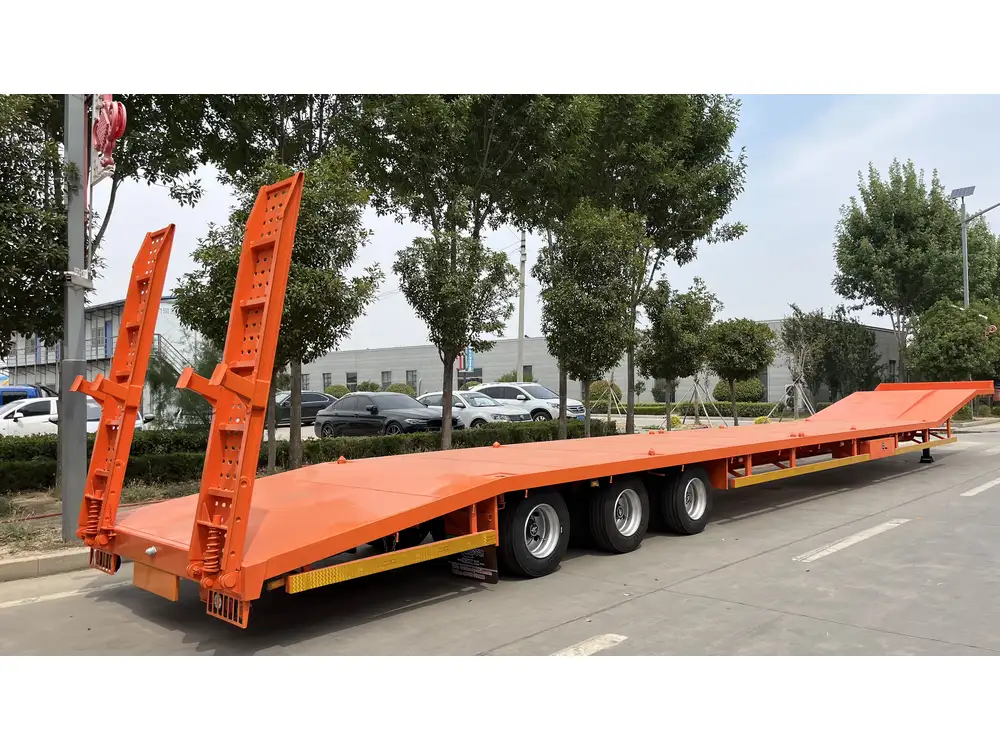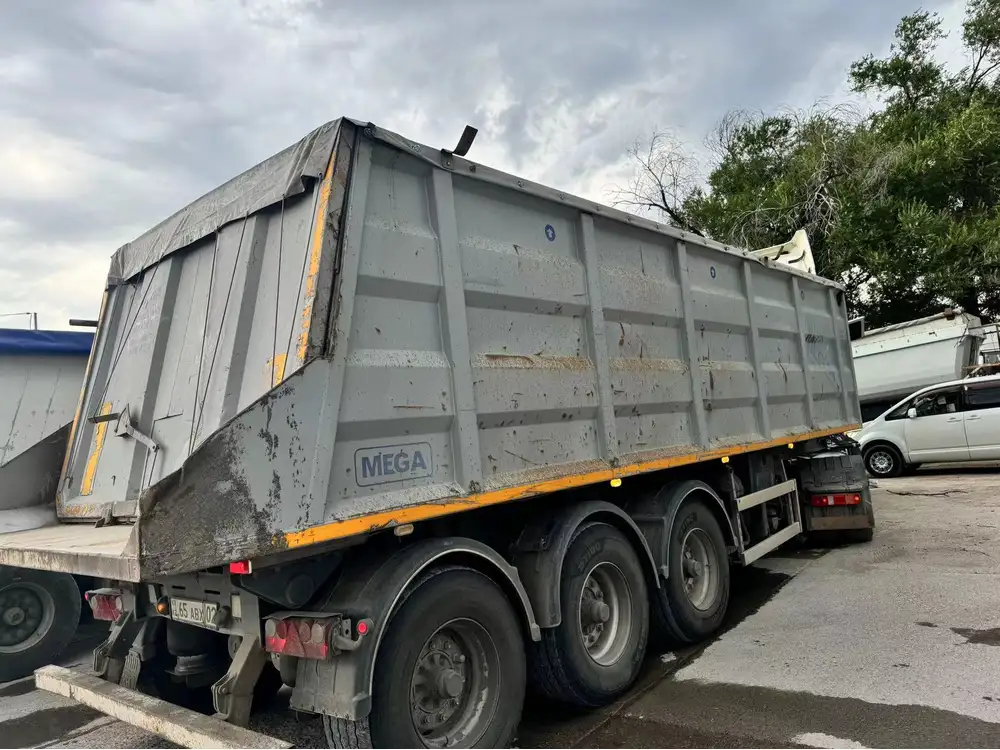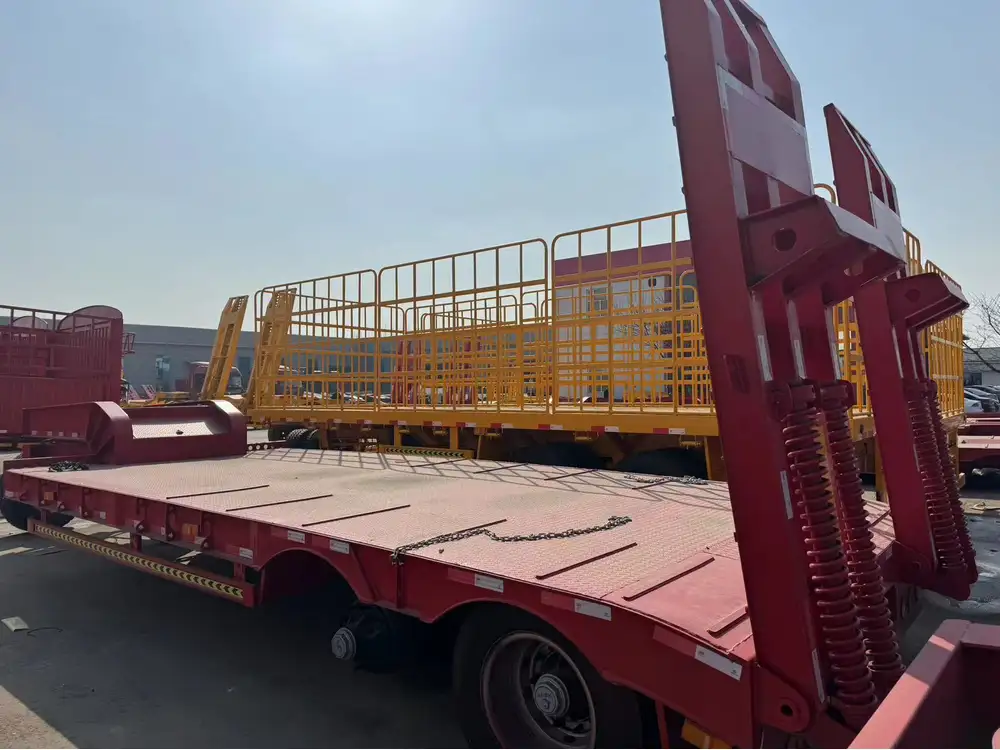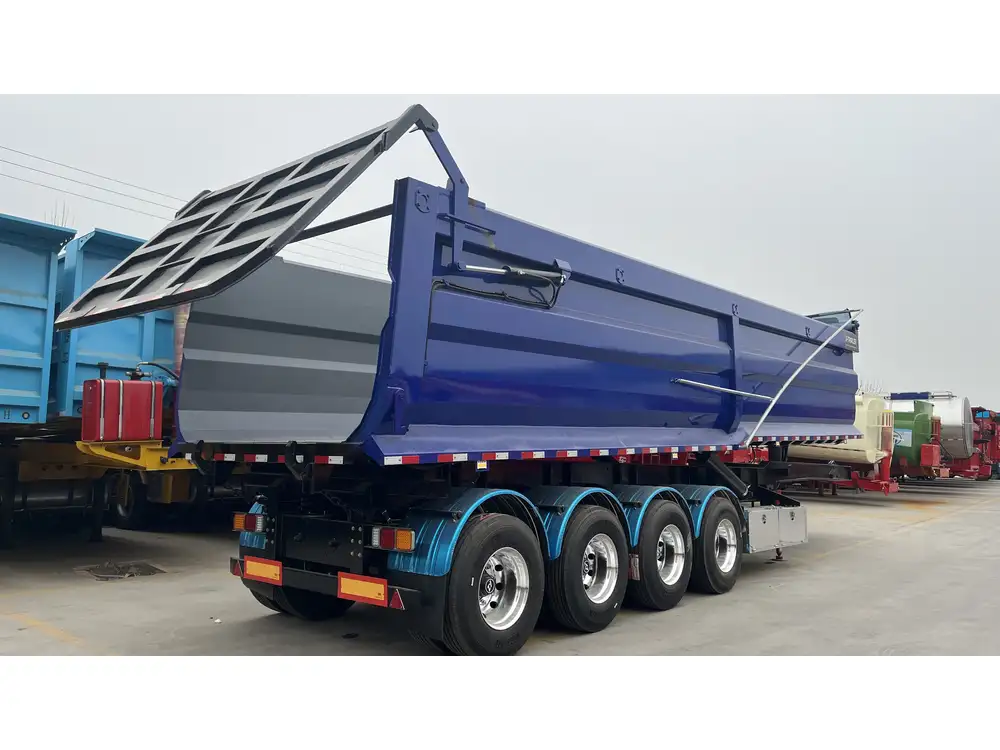Introduction to Bottom Dump Trailers
Bottom dump trailers, often recognized for their unique operational capabilities, play a pivotal role in the transportation and unloading of bulk materials. Distinctly designed with a bottom-opening mechanism, these trailers enable efficient discharge of various materials, such as gravel, sand, asphalt, and more. Their versatility and effectiveness have made them a preferred choice in numerous industries, from construction to mining.
How Does a Bottom Dump Trailer Work?
To comprehend the functionality of bottom dump trailers, it’s essential to delve into their mechanical design and operational mechanics.
Mechanical Design
Bottom dump trailers typically consist of a long, flatbed structure combined with a tow hitch for connection to a tractor or truck. The primary compartment is equipped with hydraulic systems that control the dumping mechanism.Dumping Process
Once the trailer arrives at its destination, the driver engages the hydraulic system through a designated control. The hydraulic mechanism lifts the trailer chassis at one end, allowing the materials inside to slide out through the bottom doors. The precision in this process ensures targeted unloading without the need for pivoting or repositioning, which is often required with side dump trailers.

Key Components of a Bottom Dump Trailer
1. Hydraulic System
The heart of any bottom dump trailer, the hydraulic system drives the raising and lowering of the trailer’s body. It typically includes a hydraulic pump, hydraulic cylinders, and various control valves, ensuring a smooth operation of the dumping mechanism.
2. Chassis
Manufactured with high-strength steel, the chassis provides structural integrity, supporting the weight of the cargo while ensuring durability against harsh operational environments.

3. Dump Door Mechanism
Equipped with either single or dual doors, this mechanism allows for precision in unloading. Upon activation of the hydraulic lift, these doors swing open, enabling the contents to flow seamlessly.
4. Suspension System
A robust suspension system is critical for maintaining stability during transport and dumping. It cushions the trailer against bumps and uneven surfaces, thereby protecting the cargo and chassis.
Types of Materials Transported in Bottom Dump Trailers
Bottom dump trailers are particularly adept at handling various materials, including:
- Aggregates: Gravel, sand, and stone materials are commonly transported using these trailers, as their design facilitates quick and efficient unloading.
- Asphalt: The ability to unload hot mix asphalt directly into a paving machine makes them invaluable in road construction operations.
- Soil and Mulch: Landscape projects often require the quick and efficient delivery of soil and mulch, which bottom dump trailers can provide.
- Recyclables: In waste management, these trailers can help transport recyclables, allowing for fast, efficient deposit at recycling facilities.

Advantages of Using Bottom Dump Trailers
Adopting bottom dump trailers in your operations provides numerous benefits:
| Advantage | Explanation |
|---|---|
| Efficient Unloading | Bottom dump trailers enable direct unloading at the point of use, reducing the time spent on unloading activities. |
| Reduced Labor Costs | Automated unloading mechanisms require less manual labor, effectively minimizing labor costs associated with transport. |
| Versatile Applications | Suitable for various industries, including construction, agriculture, and waste management due to their adaptability. |
| Precision | The design allows for targeted unloading, reducing material wastage and ensuring a cleaner operational area. |
| Stability and Safety | Robust design and low center of gravity promote excellent stability during transport and unloading. |
When to Use a Bottom Dump Trailer
Determining when to utilize a bottom dump trailer involves assessing specific project needs:
- High Volume Transfers: If a project requires the transportation and unloading of large quantities of materials, the efficiency of a bottom dump trailer becomes invaluable.
- Time Constraints: For projects with tight deadlines, the quick unloading process of bottom dump trailers can significantly expedite workflows.
- Various Material Types: When dealing with multiple material types, the flexibility of a bottom dump trailer can accommodate diverse operational requirements.
Alternatives to Bottom Dump Trailers
While bottom dump trailers are efficient in many scenarios, understanding alternatives can help in making informed decisions:
| Trailer Type | Key Features | Ideal Use Cases |
|---|---|---|
| Side Dump Trailers | Unload materials from the side using hydraulic mechanisms | Applications where road space is limited |
| End Dump Trailers | Dump materials off the back, optimized for loose materials | Ideal for demolition debris or aggregates |
| Live Bottom Trailers | Feature a moving floor to precisely dispense materials | Suitable for materials that require gentle handling |

Common Questions About Bottom Dump Trailers
What Is the Payload Capacity of Bottom Dump Trailers?
Payload capacity varies based on the specific design and manufacturer but typically ranges from 40,000 to 100,000 pounds, depending on the specifications.
Are Bottom Dump Trailers Difficult to Operate?
While the operation of bottom dump trailers involves understanding hydraulic controls, many modern designs come equipped with user-friendly operational systems, making them manageable even for less experienced drivers.

How to Ensure Maintenance of Bottom Dump Trailers?
Regular inspections of the hydraulic systems, checking the chassis integrity, and ensuring the suspension systems are crucial for maintaining optimum performance. Scheduling routine maintenance checks can help prevent operational issues.
Conclusion
Bottom dump trailers represent an ingenious solution for efficient material handling in various applications. Their unique design, combined with robust mechanical components and vast operational versatility, positions them as a staple in industries like construction, agriculture, and logistics. By understanding their functionality, benefits, and various applications, operators can maximize their efficiency and effectiveness, thereby ensuring project success and cost-effectiveness. Adopting bottom dump trailers can be a game-changer in streamlining material transport, enhancing operational efficiency, and improving overall productivity.
Forging ahead with informed decisions and leveraging the strengths of bottom dump trailers will not only address immediate logistical needs but also pave the way for future operational success within your industry, ensuring you remain competitive in today’s market.



